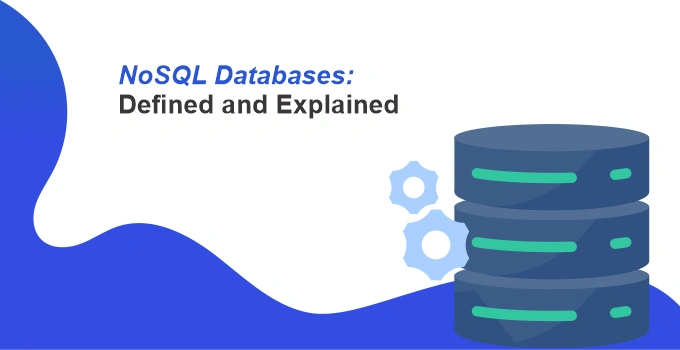NoSQL Databases: Defined and Explained
NoSQL databases are a new breed of databases that have been popping up lately. However, there are no defined specifications or agreed upon standards so what does it mean? The businesses are tapping into the data to analyze their internal business processes which ultimately brings increased revenue. NoSQL technologies have gained fame for being flexible and scalable enough to deal with Big Data requirements.
In the 1970s, 1980s, and 1990s, when storage was expensive, people stored as much as they could. Nowadays, when storage is dirt cheap, people don’t store as much as they could. This guide hopes to answer that question to clear up some confusion when it comes to NoSQL databases.
Think You Know NoSQL? Think Again
The term, or definition, of a NoSQL database, can be confusing. Many conflicting definitions are floating around the web. NoSQL databases can be classified as a type of database that operates differently and has different data models and architectures than the traditional Relational Database (RDBMS) model. Its capacity to store and handle massive amounts of data across dispersed systems distinguishes it.
Types of NoSQL Databases
Many people are switching from SQL databases to NoSQL databases, but they’re all just selecting which data model suits them best.
1.Column-oriented
This kind of data architecture stores information in columns nested within other families of columns, rather than in rows. Consider columns, groups, and columns inside groups.
Column-oriented databases offer excellent data aggregation and data access performance since data is stored in such an efficient way. Complex querying, on the other hand, is a huge disappointment.
2.Key-Value Store
A hash table is a data structure that can be used to store information in such a way that very few computational resources are needed. A nice feature of the hash table is that the sections of the table easily fit in memory and also do not require much space on the hard disk.
Because data may be a mix and match of pretty much anything, this sort of data model is extremely adaptable, allowing you to find a database to meet any particular requirements. Key-value store databases are a common choice for NoSQL databases. They give developers the ability to change the way data is stored without having to modify the entire application.
Furthermore, key-value stores are ideal for applications requiring high performance and/or volume. The key-value database DynamoDB, for example, serves millions of users across the world almost every second.
Click here to read: Top 5 Benefits of a Cloud ERP for Businesses
3.Document Stores
Document stores do not connect XML and JSON in the same manner that SQL does. When these two are decoupled from one another, they can operate at maximum efficiency rather than being obliged to run at the same speed as the slowest denominator. There are even NoSQL databases designed particularly for XML, which is cool.
Document stores are sometimes thought of as a sub-type of key-value stores, although this data model subtype is large enough to warrant its section. Its appeal stems from its versatility, which allows you to use any data type.
4.Graph
This data architecture is ideal for a database that contains information in graph form, as you would have inferred from the name.
Information is represented as nodes and edges in this data model type. The nodes, in particular, hold information such as addresses, names, dates, and so on, while the edges define the interactions between the nodes. It enables graph data models to display links across frequently different types of data, assisting you in extracting relevant and valuable data.
Benefits of NoSQL Databases
- Known Failures
- Adaptability to failures and recover data quickly
- Resilience to failure
- Increased scalability
- High Availability
- Low Cost
- NoSQL Databases are Sophisticated, Scalable, and Distributed
- Avoid Object-Relational Impedance Mismatch (ORIM)
- Reduce vendor lock-in
NoSQL Databases Drawbacks
- Compromises performance to achieve high availability
- Compute-intensive operations are very slow
- Compatibility issues with many applications commonly used to solve non-related problems
- Require constant tweaking of the NoSQL database itself
- Limited application and consistency
- Cannot be accessed by the heterogeneous system
- Poor secondary indexes
Summing Up
NoSQL Databases offer a solution to the limitations of the traditional relational model and allow for rapid prototyping and scaling of large web applications.
NoSQL Databases are here to stay. They are the new normal for the ever-growing requirements of businesses of all sizes. Gone are the days of simple flat tables of data, new age enterprises are embracing NoSQL databases to meet their needs.
The need for a traditional SQL database is only when the application only needs the relational model of the data and not the non-relational features that come along with it. It can be concluded that NoSQL databases are better suited for large-scale applications with very different requirements from transactional systems.



